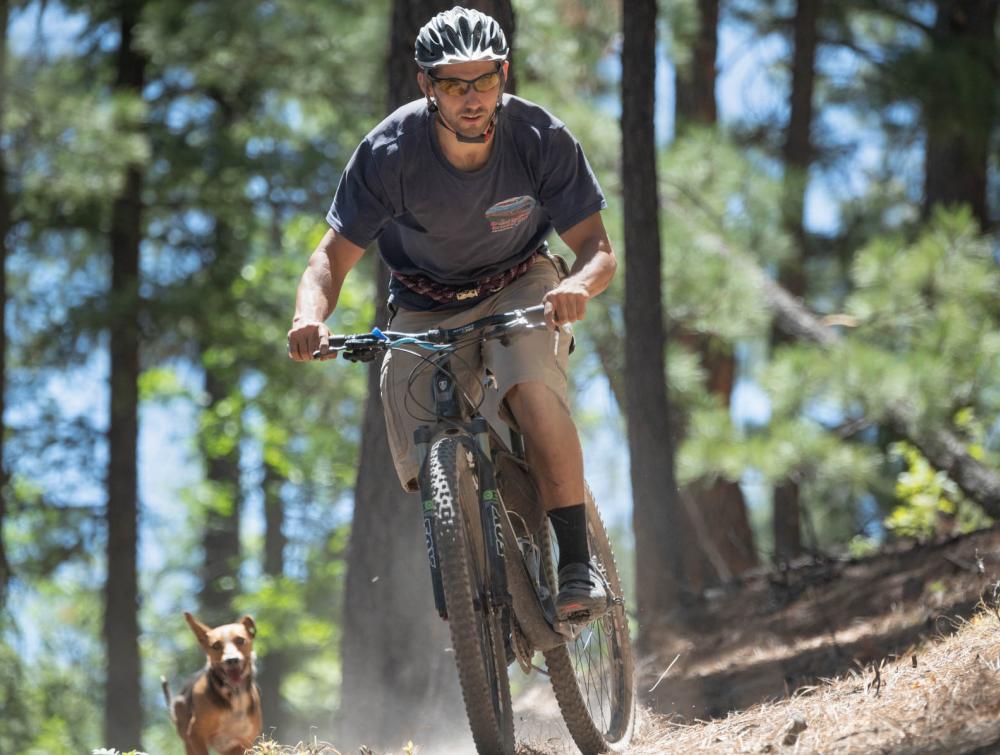Finally! Some answers to your FAQs on biking on public lands

Gila National Forest, NM
Mason Cummings, The Wilderness Society
Here's what you need to know about biking in public lands.
America's wild places offer oodles of opportunities to enjoy the beautiful outdoors. But there's one type of recreation for which it seems the rules are not quite clear.
Naturally, cyclists are as eager as anyone else to experience adventures in our nation's spectacular forests, parks, refuges and other public wild lands. But while bicycles are a non-motorized form of transport, they are still considered vehicles, and their impact must be managed just like any activity. Land agencies (like the national park service and forest service, for example) attempt to regulate these uses by formulating policies. However, these vary widely, so many questions often remain unanswered.
Where can I take my bike? When in doubt, do the research!
National Trails? Depends...
It depends largely on the trail in question. The Appalachian Trail prohibits all bicycles on the trail or the trail corridor, but this type of transport is encouraged on the Continental Divide Trail. The Forest Service recently decided not to open the Pacific Crest Trail (PCT) to bikes, but avid bikers of the northwest have explored a parallel route. Bikes are allowed only on certain segments of some trails, such as Ice Age and North Country.
Designated Wilderness Areas? Grab your hiking boots instead
This is one type of land about which there really is no question. Bikes and all other types of "mechanical transport" are explicitly banned from lands designated as wilderness, period. Of course some cyclists still wish it was otherwise.
National Forests? In most areas...
Generally speaking, mountain bike riding is permitted on all national forest roads, in the general forest area and on horse trails. But mountain bikes are prohibited in Wilderness Areas (which can be located within forests) and on those trails designated for hiking only.
National Wildlife Refuges? In certain specific areas...
Bikes are not allowed off-road in refuges, which includes hiking trails. However, some refuges have dirt roads open to mountain biking, so you may want to contact the refuge for details.
Western BLM lands? In most areas...
Unless signed otherwise, all roads on BLM lands are available for mountain biking. If you research the BLM website, they often will recommend certain trails, such as these in California.
National Parks and National Monuments? In certain areas...
Park Service rules prohibit bicycling anywhere in National Parks except on paved roads and “designated routes”, which vary by park. There are 40 national park units that allow mountain biking on trails and dirt roads, including Maine’s Acadia National Park, California’s Golden Gate National Recreation Area, and Big South Fork National River and Recreation Area in Kentucky and Tennessee. In 2012, the National Park Service ruled that individual park superintendents could decide whether to allow bicycles on trails and pathways, stirring more controversy.
Monuments are much the same. When the President or Congress designates a new national monument, the agency in charge of that area creates a management plan from for the area. This plan may contain restrictions on bicycle use. Not all plans are crystal clear, however.
National Conservation Areas (NCAs) and National Recreation Areas (NRAs)? In certain areas...
All roads are open to cyclists, but trails are limited. Once again, you'll have to do your research.
What do I need to know when I do go?
Here are the International Mountain Biking Association's Rules of the Trail:
- Ride Open Trails: In other words, those open for bicycle use. You may need to obtain permits or other authorization.
- Leave No Trace: Stay on existing trails and don't cut switchbacks.
- Control Your Bicycle: Obey all bicycle speed regulations and recommendations.
- Yield Appropriately: Let your fellow trail users know you're coming and yield to other non-motorized trail users. Bicyclists traveling downhill should yield to ones headed uphill.
- Never Scare Animals: When passing horses, use special care and follow directions from the horseback riders (ask if uncertain).
- Plan Ahead: Keep your equipment in good repair and carry necessary supplies for changes in weather.
Any ideas on where I can go?
Visit these links for ideas on the best biking destinations on U.S. public lands:
- Great Outdoor Recreation Pages' Top Ten National Parks for Biking
- Recreation.gov's article on Mountain Biking in the Fall
Where does The Wilderness Society stand?
We believe in protecting America's treasured lands, and to work towards that goal we partner with all sorts of stakeholders, including land management agencies as well as recreation groups like biking organizations. For example, we recently acted as a major player in moving legislation forward that would protect New Mexico's Columbine Hondo as a wilderness area by building relationships with local mountain bikers to craft a bill that is publicly supported by The International Mountain Bicycling Association (IMBA). We believe this to be, as Senator Udall remarked, the best “model for how we should do conservation work.”
